MAKING A Drill Bit GUIDE
Even with experience, it can be difficult to drill holes square to the wood in both directions with a handheld drill no matter the type. In cabinet work, we often rely on holes to be as perpendicular as possible for accuracy, alignment, etc, and even when we do have a drill press it is not always possible to take the workpiece to the machine. I use a simple homemade guide that can be made from scraps in just a few minutes and that ensures the hole runs true to guide either pilot holes for screws, twist drills and auger bits and more.
The following steps will show you how to make the drill guide. I designed it to work as a guide in making many projects as in the case of making my router plane where accuracy is critical for attaching all of the metal components.
Making the Guide
To make this guide, I started with a block of wood 3″ long by 1″ wide and 7/8″ thick (approx. 76mm x 25mm x 21mm). I trued the block square and straight and then ripped it down the length so that one half measured approximately 5/16″ (8mm) and the other 3/8″ (10mm). (I did this so that the guide would sit against the internal corner where the upstand meets the base on the router plane.)
I used the bandsaw to rip the trued blank into two but you can saw down accurately with a handsaw and true up the joining faces. You could also start with two separate pieces of wood, as long as they are square and the same height.
Make two knifewalls 1/8″ (3mm) apart across the 5/16″ (8mm) thick piece somewhere near the centre.
Saw down the knifewalls to a depth of 1/8″ (3mm), and then use a narrow chisel to remove the waste working from both sides of the blank to an approximate depth line.
Gluing the two parts together again ensures that the parallel walls will keep the 1/8″ (3mm) drill bit square when we use it to clean up the hole after the glue has dried.
Press firmly together to even out the glue and clamp in the vise until dry. Ensure that the surfaces align accurately and that there is no slippage during clamping.
Once the glue has set, drill through the guide with the 1/8″ (3mm) drill allowing the bit to follow the guide into and through the wood. This will remove any dried glue.
Using the Guide
Having worked accurately, use an awl to start the hole, place the tip of the 1/8″ (3mm) bit in the hole and rotate the bit just enough to locate the centre of the hole.
Insert the bit through the hole in the guide, locate the tip of the bit into the start hole, press the guide firmly against the surface and drill.
Having drilled to a reasonable depth, you can carry on drilling deeper without the guide, as the hole itself will guide you.
If you need to drill to a specific depth, preset the twist drill in the chuck using both the guide and the thickness of the wood to guide you.


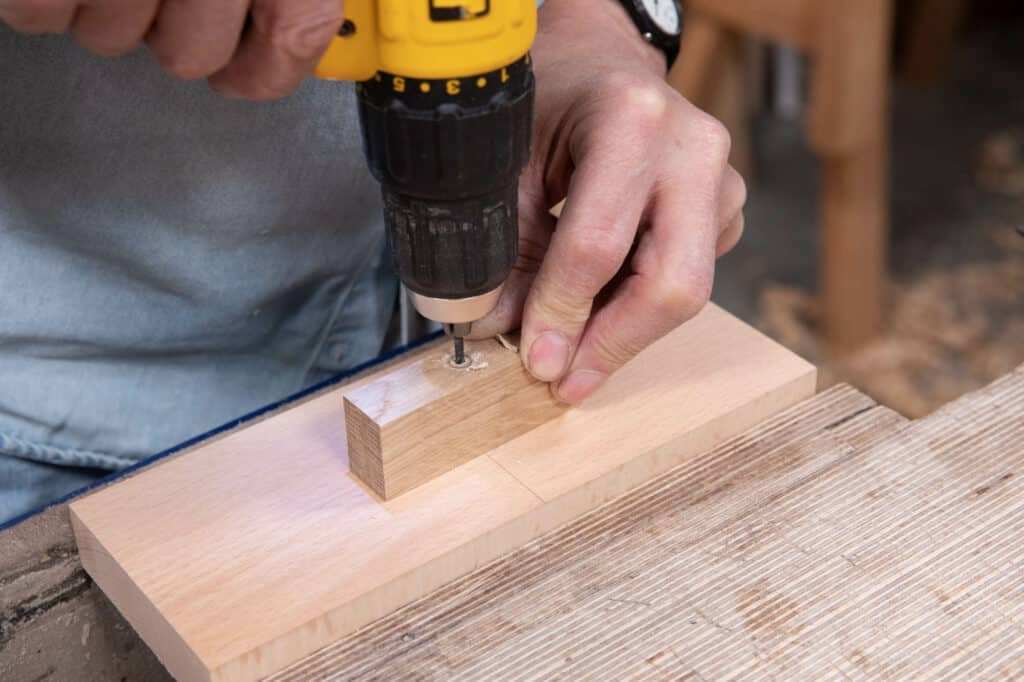
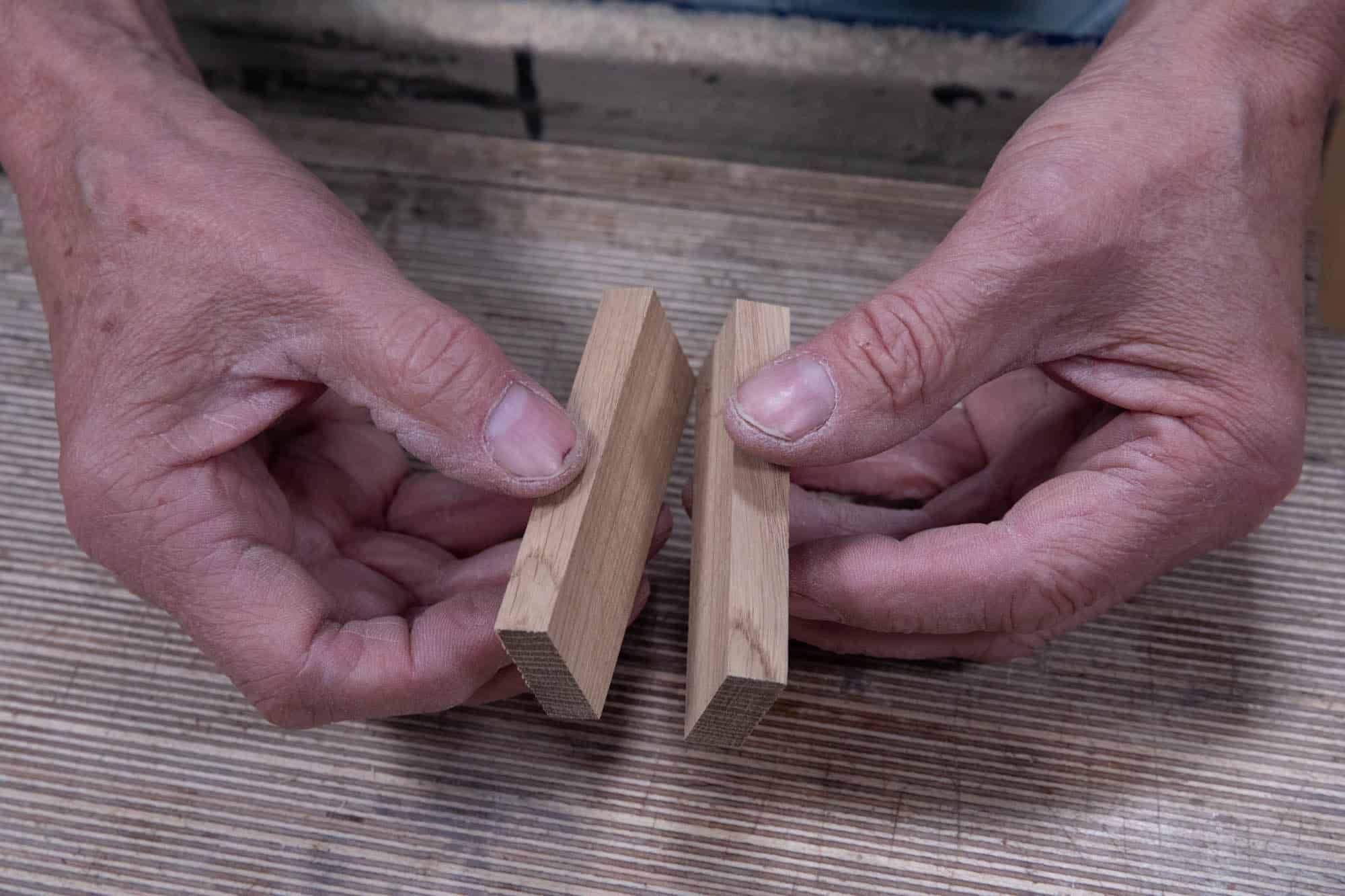
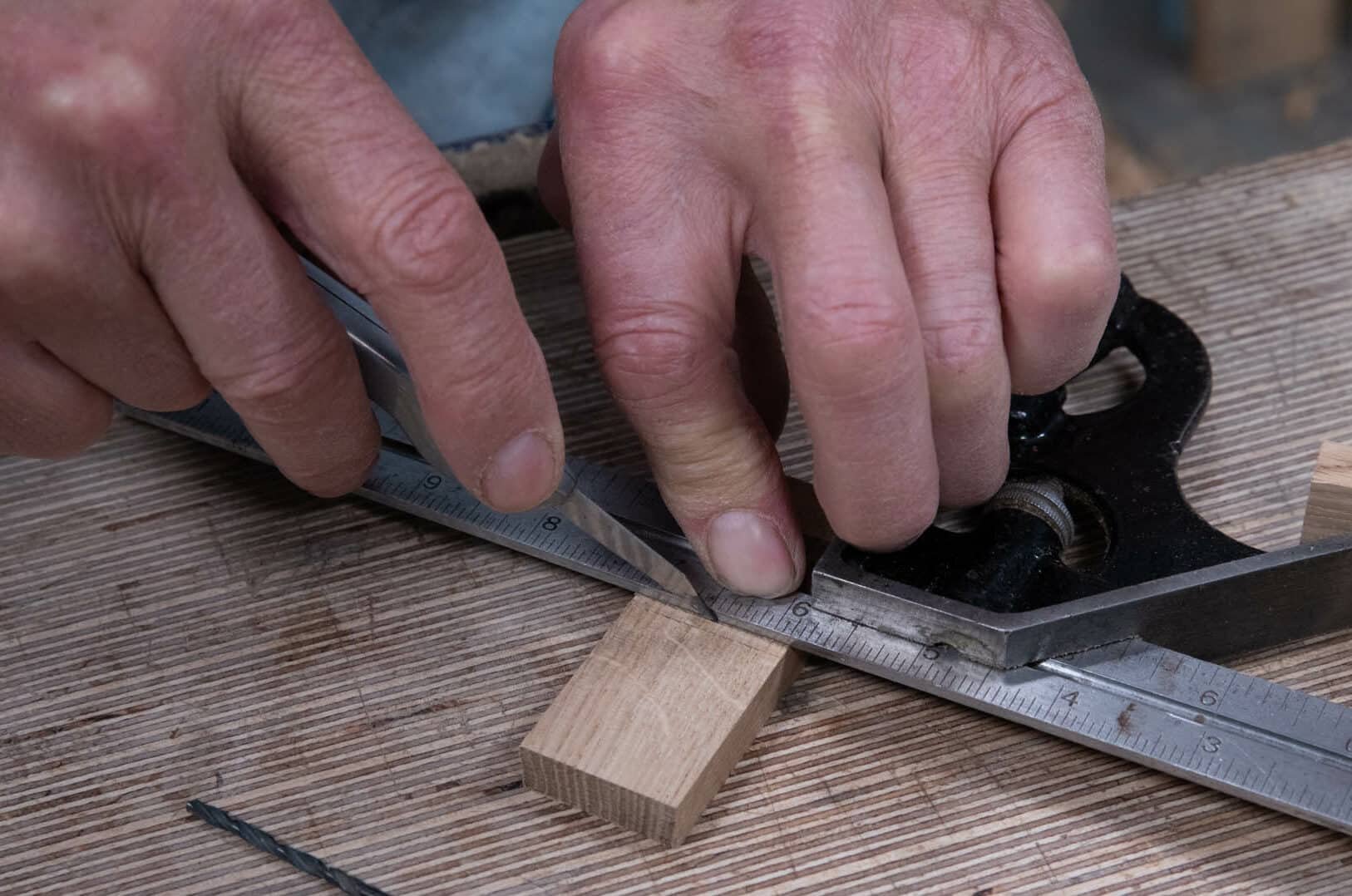
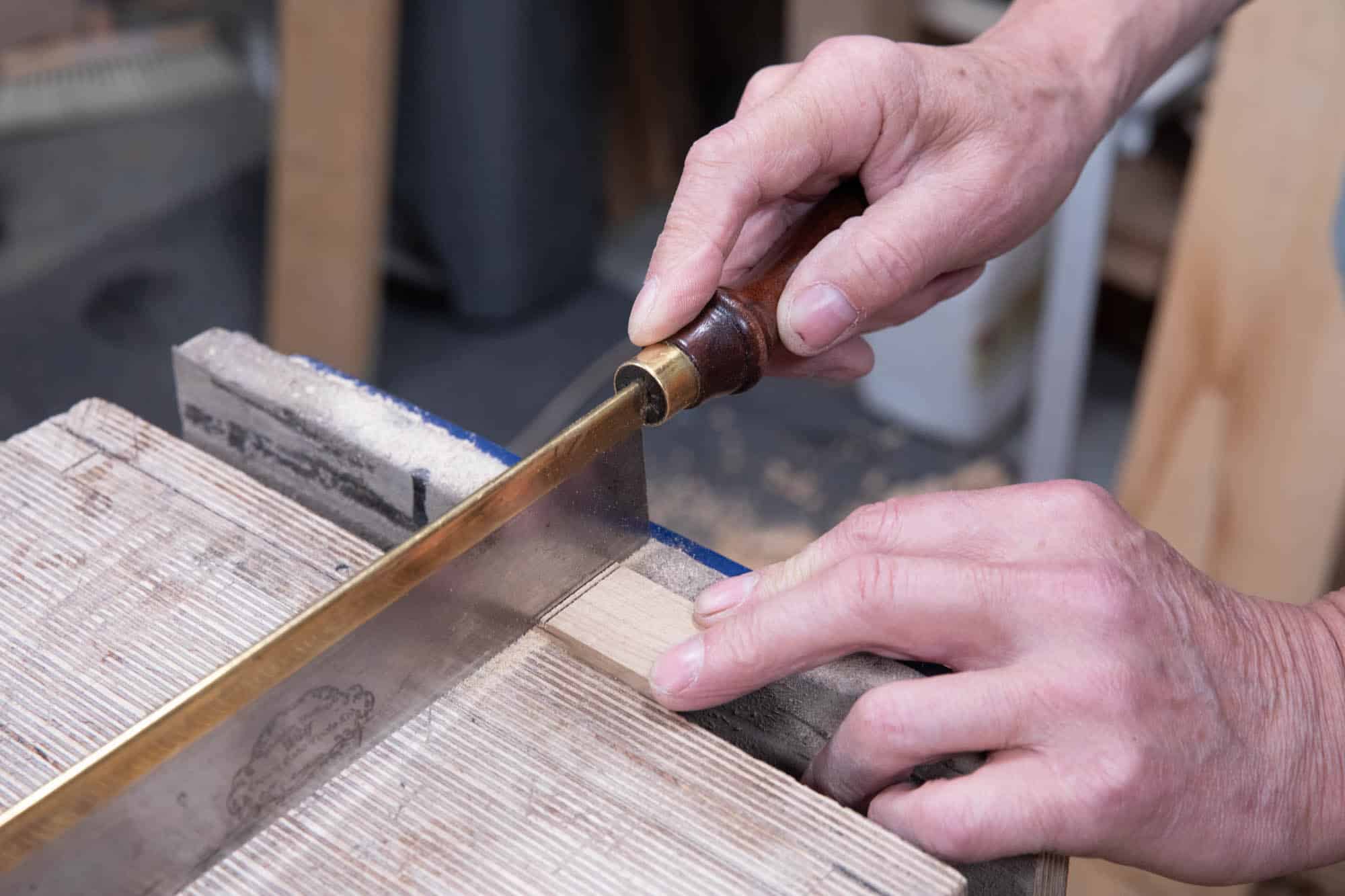
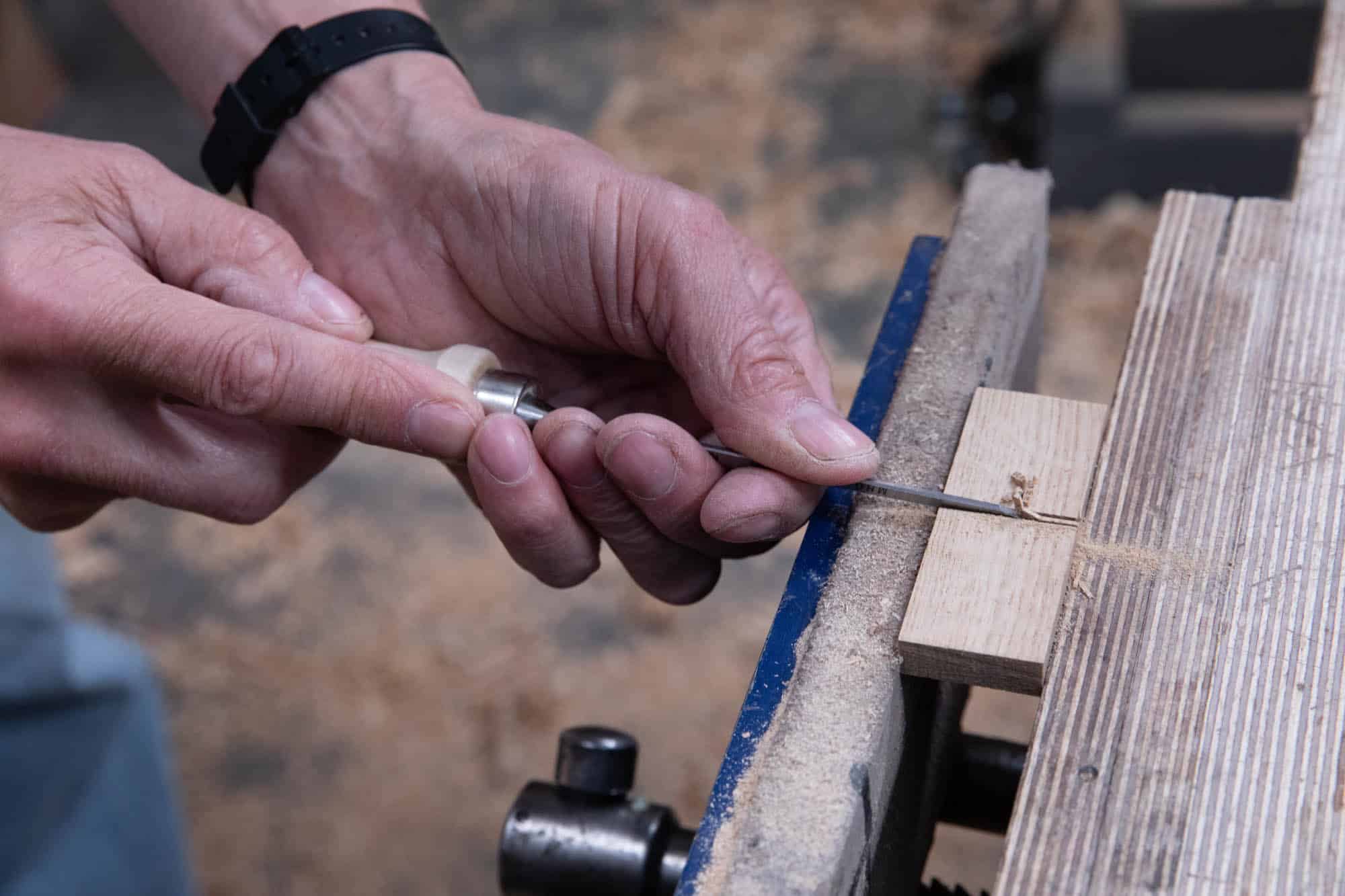
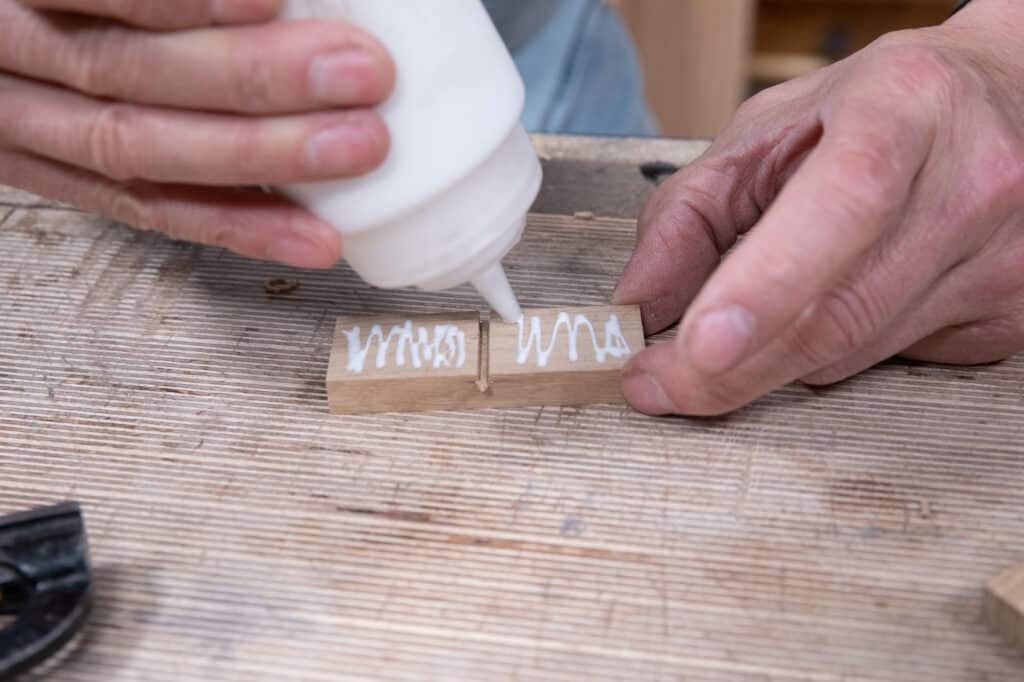
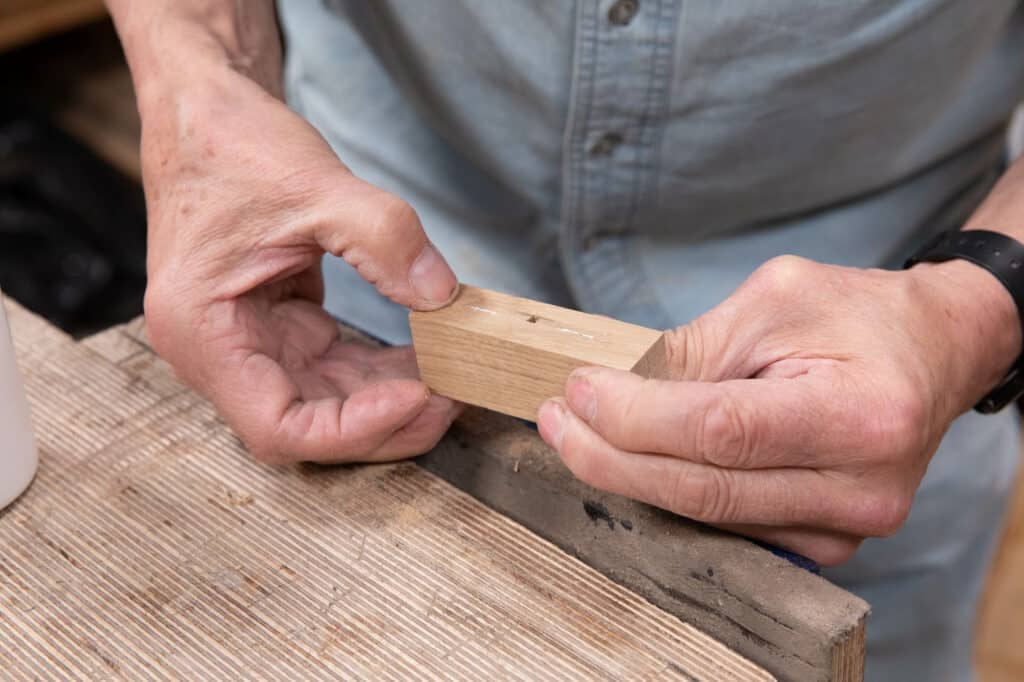
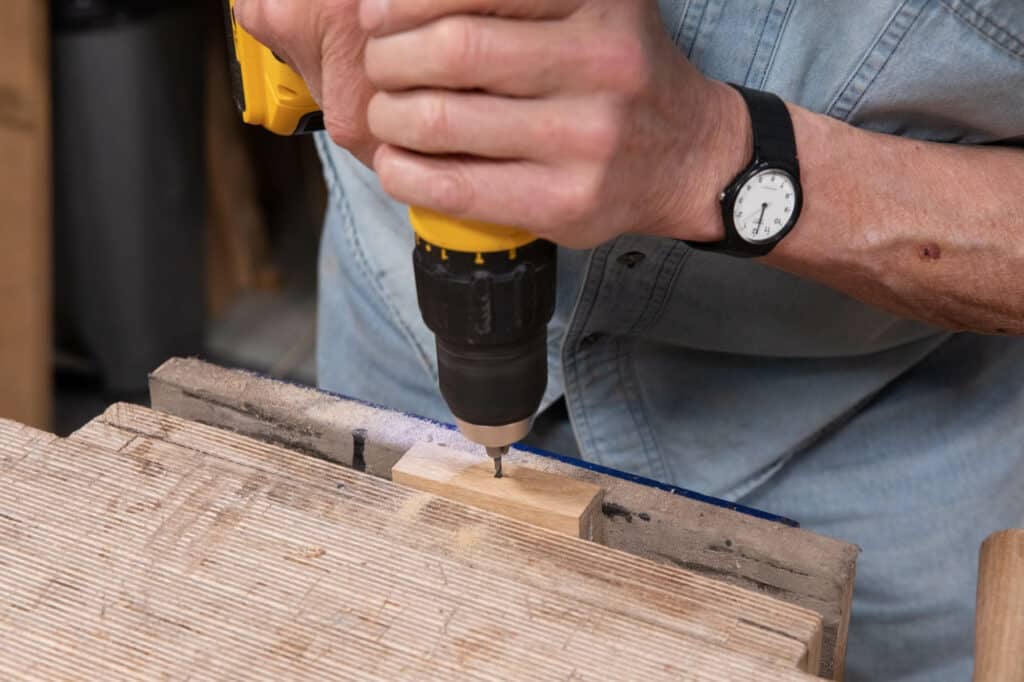
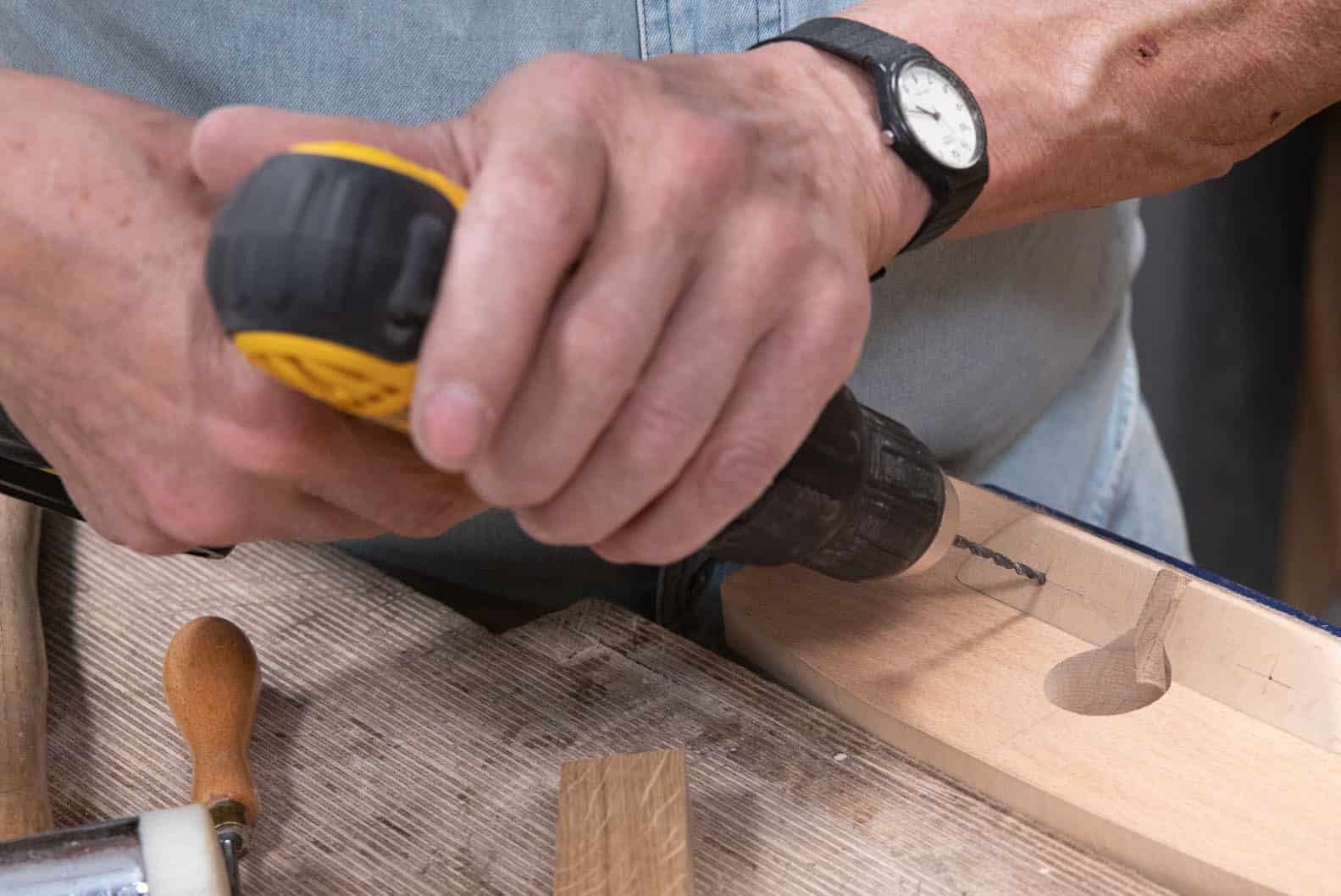
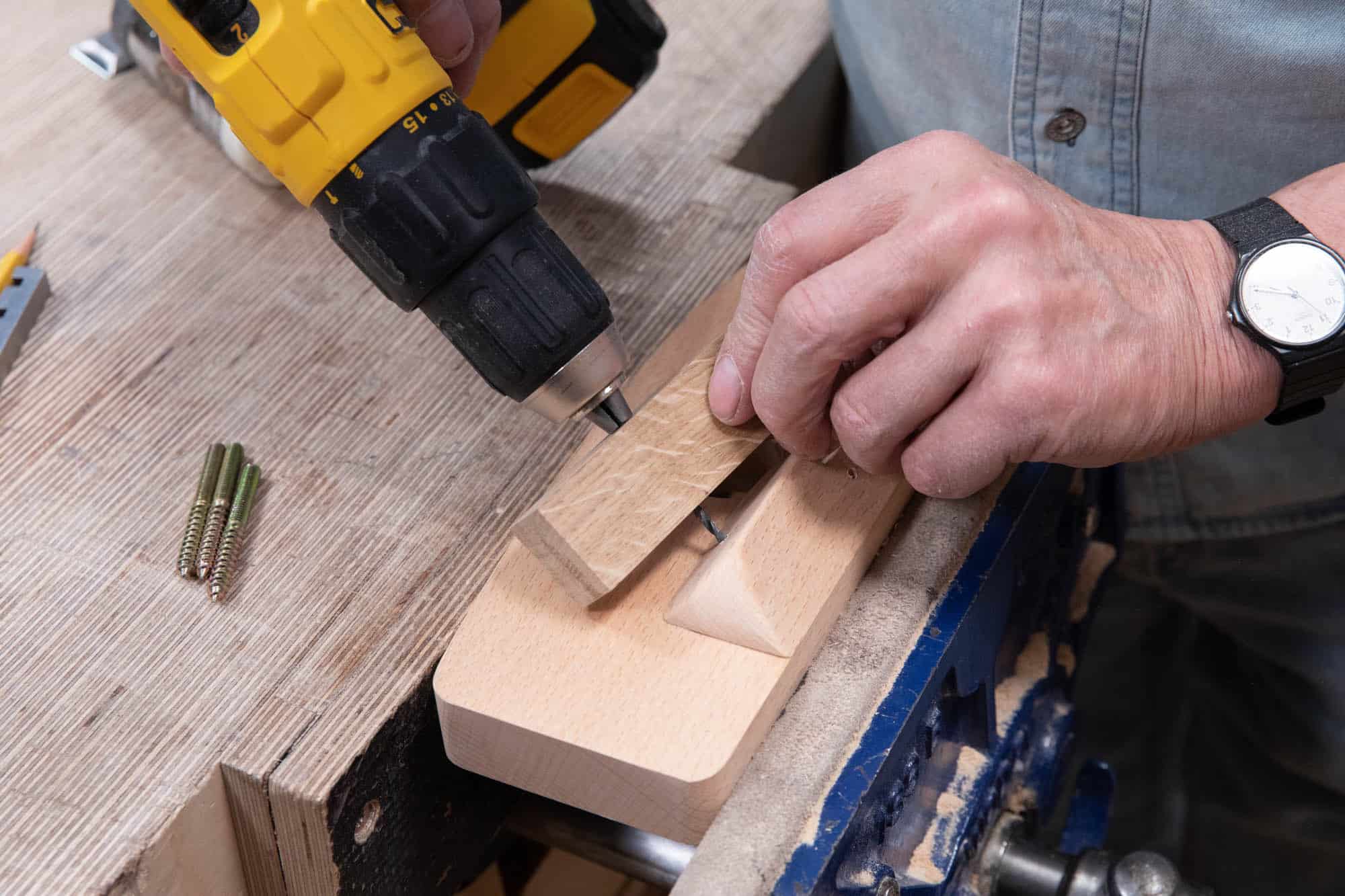

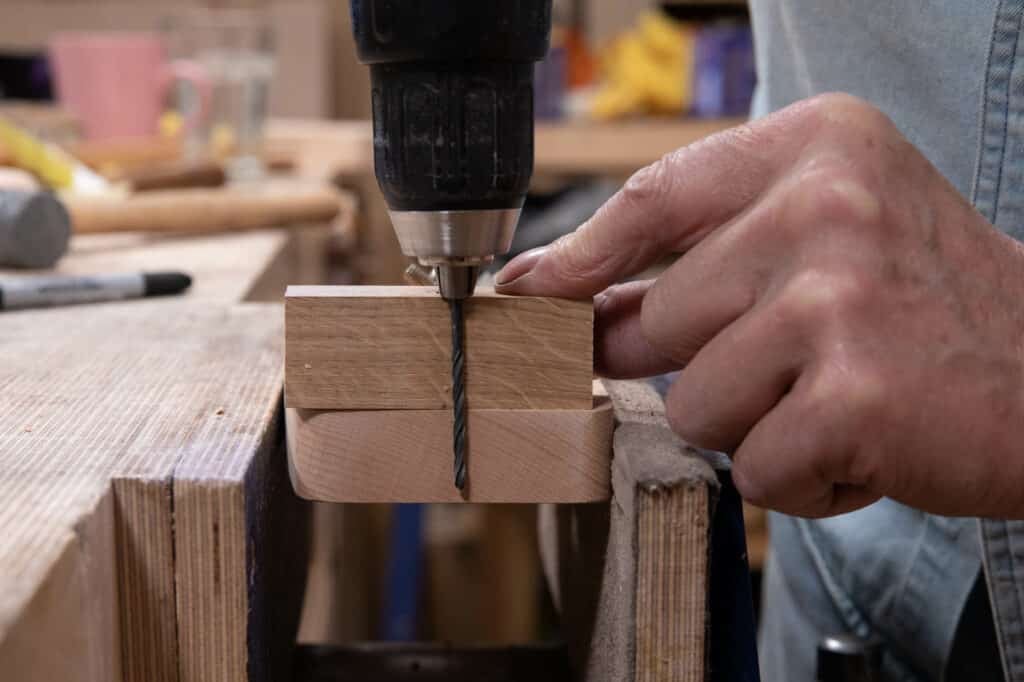
could you use the same idea to drill a pilot hole at a specific angle to a surface say on a stool leg using a sliding bevel rathe than a square to lay out the cut in the middle?
Yes but you would have to clamp it or it will move about. I worked with metal and we used blocks or turned top hat bushes into which we could swop different sized hardened drill bushes. We could then drill the hole, a counterbore sometimes used a bush to guide a tap if the hole was to be threaded. Much to easy to break a misaligned tap. Surprisingly taps are bigger than size by a few thousands to give a little clearance on the crest of the thread, obvious when you think about it though.
With a pencil or awl, mark where you want to bore a hole. Center your bit on the mark. Place a bit of mirror next to the bit, and then adjust the position of the drill such that the bit and its reflection form a continuous, straight line. Drill a perpendicular hole.
What about if you lean the drill directly away from the mirror? Won’t it still appear as a straight line in the reflection?
Clarification: Place a small PIECE of mirror glass next to the bit. Phew! Who knew it would be so challenging to describe something so simple.
I came here to leave a similar comment. I’ve used an old CD (we probably have a bunch laying around) to act as a mirror. It has a built in hole to drill through and you can see if you’re off in any angle.
Once I needed to drill 4 7″ precise parallel holes on a wall based on a template and was able to do it with pretty good success by taping it to the wall.
It won’t work on every instance, but for anyone without a drill press, this helps in a pinch.
Not my idea, btw, found it while looking online, forget where.
Some very ingenious people out there. I never stop learning. Well done fella’s.
Anyone with an accurately set up drill press could simply mark the top of a piece of wood and drill it through to make a drill bit guide. The bottom surface must always be presented to the workpiece (hence marking the top).
I guess you missed the whole point of this article, Andrew. What you said is obvious, I know, but 98% of people do not own or have access to a drill press. That’s why I put this together.
Thanks Paul I don’t have a drill press, I am starting woodworking, and I don’t have a press drill, this article help a lot
Brilliant thank you Paul. Very helpful. I am creating a drill guide for guitar peg head tuners and I want to do it manually without buying into equipment and a drill press. This is perfect! Genius in fact.